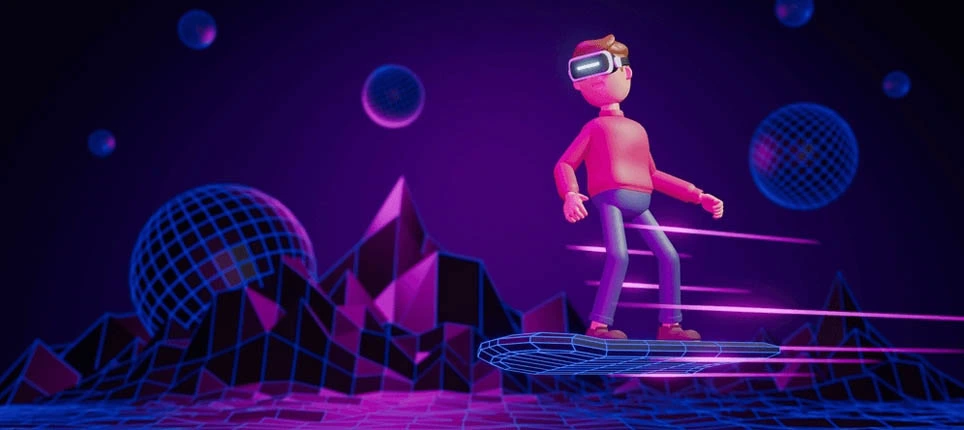How Metaverse change the searching algorithms
Searching is constantly evolving.
Each day, new websites and technologies are appearing on the Internet, which is an ever-changing landscape. Taking into account that our world has become more dependent on the Internet, it is not surprising that our search habits have changed in parallel.

Prior, search engines were all about keyword-based queries and linking to other pages using those keywords. As the world has changed significantly since then, it is time for search engines to do the same, that’s where metaverse comes in.
Let’s begin by gaining a deeper understanding of all this and start with.
What is Metaverse?
The definition of the metaverse varies by time. From its inception to present day, the definitions change in line with the advancement of technology.
The word “metaverse” was first introduced by Neal Stephenson in his 1992 novel called “Snow Crash”. The name he coined for his virtual world is a combination of “meta-” and “universe,” which means “beyond reality”. Since then, metaverse has been used to describe virtual reality in science fiction novels, films, and comics.
But due to the rapid evolution of the virtual world, the meaning of metaverse has changed.

Now, the Metaverse is an immersive virtual 3D environment where people can interact, create, and explore the digital world through computer technology. With its new algorithms, Metaverse allows users to quickly find relevant content, visualize results, and make better decisions. Users are able to interact with one another and explore digital content in a 3D environment in this virtual world.
Metaverse: How is it different from the current internet?
Metaverse is a new type of internet that has the potential to revolutionize the way we access information and interact with others online. Unlike the current internet, Metaverse is designed to be more immersive and interactive than ever before.
Let’s take a look at how the metaverse differs from the current internet
- Metaverse would provide significantly better security and speeds than the current internet.
- With features such as voice chat and collaborative spaces, the Metaverse will enable more immersive, interactive interactions between friends, colleagues, and strangers.
- There will be several built-in safety features in the Metaverse, including identity protection and user authentication, that make it much more secure than the current internet.
- Live video conferences and real-time gaming could be made possible by the metaverse.
- Unlike the Internet today, the metaverse would allow users to create their own avatars and customize their appearance, allowing for greater creativity.
How Metaverse takes visual search to a whole new level
With the use of advanced artificial intelligence, Meta Verse is able to quickly and accurately identify objects within images with great accuracy. By leveraging AI-based algorithms and computer vision, Meta Verse takes visual search to a whole new level. The following points demonstrate how the metaverse changes the search algorithms.
1. Virtual store can be built in a virtual environment
The virtual store would allow for shoppers to find what they are looking for and purchase an item without any interference from other shoppers and without going through store employees. This would also save time for both shoppers and store owners due to reduced time spent in the shop.

Walmart is already experimenting with Virtual Reality at some stores across America to offer their customers a virtual shopping experience. The company has partnered with Google and other tech companies to create an app called ‘Google Store’ that lets shoppers browse and purchase products through a 3D interface on any smartphone or computer. By eliminating the need for customers to physically walk through a store and because the curated items are cheaper than in physical retail shops, we may be seeing more of these virtual stores in near future.
There is no doubt that most people will be thrilled with this upcoming interactive way of shopping!
2. Avatar technology
Using avatars, users can navigate the world by controlling their digital representation, enabling a more interactive experience than ever before. Avatar technology has made it easier than ever to find and access information, making it possible for users to search visuals in a 3D space with ease.
With avatars acting as personal guides, users can find exactly what they are looking for within minutes. With augmented reality features, such as product previews, customers can get an up close and personal look at their desired items before making a purchase.
3. Virtual reality for local SEO
Virtual reality is no longer a futuristic concept, it’s a present day reality.
Companies are already investing in virtual reality for training, and these immersive experiences can be used as part of an SEO strategy and be the future of SEO as well. With this new technology, users can navigate through a virtualized environment based on their location, allowing them to get a better understanding of the area, its amenities, and how to get there.

Businesses can create virtual tours of their locations and let customers virtually “walk” through their stores. For example, a user can go online and virtually walk through a store to get a feel for the atmosphere, or they can take a virtual tour of a restaurant before making their reservation.
This will help users to find more accurate and relevant information quickly.
4. Incorporating metaverse and 3D model schemas
As search engines evolve to incorporate the metaverse, brands will start to appear more prominently on search engines. Markups can assist in tagging various objects present in the virtual world and metaverse spaces in such a way that the structured tags are readily accessible by search engines and machine readable. The structured information which is presented to search engines can be indexed to make your business/brand visible in the metaverse, just as search results on Web 2.0 are displayed.

By using the JSON-LD format, the 3D Model Schema Markup will inform search engines that the content type on your website is a 3D Model. In the metaverse, virtual content types will prevail and structured data markups can be an effective way to increase visibility in the metaverse.
5. Images, logos, and holograms in 3D
The type of information that is most effective for search engines is visual. This means that the metaverse will offer a more immersive experience as 3D images, logos, holograms and augmented reality will merge with VR. Users will be able to view items in their own homes before purchasing them or make a decision about something without ever seeing it in person.

Not only does this form of visual search revolutionize our ability to find information, it also provides an immersive experience that is unlike anything witnessed before. Nevertheless, this opens up a new discussion about how search engines will index 3D assets. However, Structured Data Mark-up has always been a way to let search engines understand and index content for better indexing and search results. This is accomplished through well-coded Structured Data Mark-up (SDM).
Myths about Metaverse
Myth #1: Metaverse is only a gaming world
This is not true, the metaverse is an expansive virtual world that encompasses a variety of activities and experiences for its users. While gaming is certainly one of those activities, there are also many other activities such as education, commerce, socializing, entertainment, and more. In reality, the metaverse is a virtual universe where users can interact with each other, collaborate on projects, and explore new worlds. It is an ever-evolving platform that allows users to create their own content and experiences.
Myth #2: Metaverse is a FAD
There was a time when the Metaverse was considered a fad, just as the internet was at one point. In spite of the fact that we remain years away from a fully realized Metaverse, we are already living in one in a very primitive form: we work remotely, we socialize and learn virtually, and we find entertainment without ever having to leave our homes. As technology advances, however, our ability to meet those needs will continue to evolve.
Myth #3: Metaverse is a virtual reality
Considering the Metaverse to be a virtual reality (VR) environment is similar to claiming the internet to be only your smartphone, it is simply a method of interacting with it. The Metaverse can also be experienced through VR, as well as via laptop or desktop computer.

